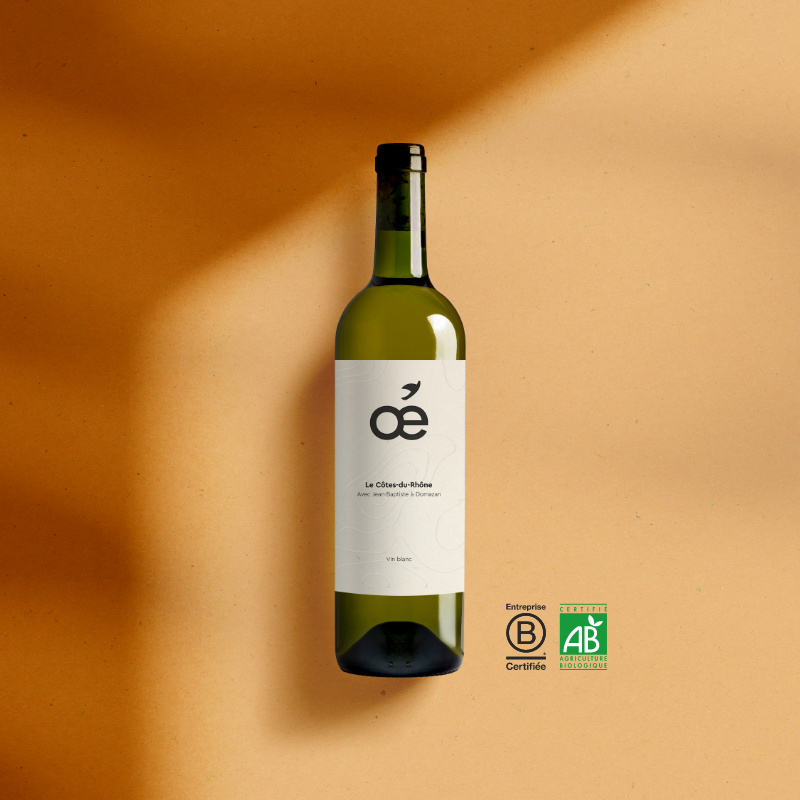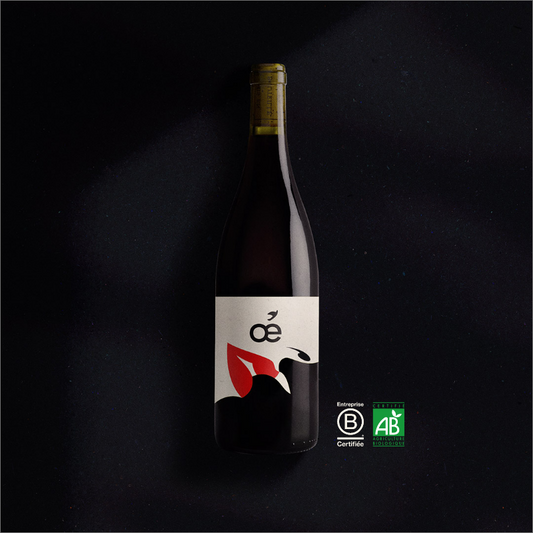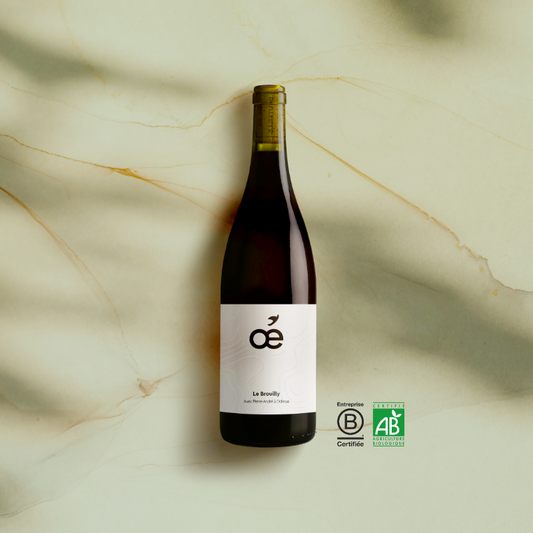Oh summer ! The season for barbecues, hikes, walks under the sun and lazing by the pool. With the Oé team, we particularly like this season which rhymes with sun and evenings with friends on the beach. The perfect moment to enjoy a good glass of organic and fresh rosé on the terrace, like our Corbières for example. One might think that summer is also a period conducive to rest for the winegrower and calm for the vines . In reality, this is not quite the case. Each season has its share of work in the vineyards and summer is the last straight line for the winegrower before the harvest . Between the ripening of the grapes and the final treatments for the vines , the winegrower has plenty to take care of for the hottest season of the year. We give you a little overview to find out more, here we go!
The vegetative cycle of the vine
A few months ago, we told you about flowering and fruit set in the vines in the spring. These stages of the vegetative cycle of the vine take place from the month of May. Flowering as you would expect is when the flowers open. This stage is followed by fruit set, the fertilized flowers becoming berries that will ripen throughout the summer. The berries grow and gradually turn into large green grapes. For this development to go well, good weather conditions are needed. Ideally, a mild, sunny climate and mild temperatures with as little rain and precipitation as possible for healthy grapes!

During the summer, the grapes pass from the stage of fruit setting to that of veraison. This stage happens about 6 to 8 weeks after flowering between the months of July and August. You don't know what veraison is ? We explain to you! This is when the grapes will change in appearance and color. From an opaque green, we go to a beautiful translucent green for the white grape varieties like our delicious white Bordeaux . For the red grape varieties which will give good organic wines like our Saint-Emilion Grand cru , the grapes go from a green color to a pink color, then red, even black in certain cases. The vegetative cycle of the fruits stops and ripening can begin.
In August, it is the turn of the vine shoots to change color, the branches go from a green color to a dark brown color and the wood hardens to become more robust. This phenomenon is called hardening and lasts until autumn and leaf fall. Throughout the maturation, the grapes get bigger and will accumulate sugar while losing their acidity. As you have understood, maturation is the most important period for grapes because it is what will give its aromas to the wine . Aromatic touches are added during aging in the cellar thanks to the different barrels and wooden barrels in which the wines will macerate following the harvest. The end of maturation comes 120 days after the start of flowering and 45 days after veraison in August. In this way, the winemaker knows when the harvest will take place at the end of September.
Summer work in the vineyards
In summer, the ground maintenance work is usually finished. The winegrower has worked his land well during the spring between weeding to limit weeds and grass growth , as well as the addition of green manures to facilitate fertilization. Now is the time to let nature work. The winegrower has all the time he needs to take good care of his vines.

Summer pruning in the vineyards
During the spring, the winemaker takes care of the trimming and stripping to facilitate the growth of the grapes. These operations also continue during the summer for the bunches that have not yet reached veraison.
We speak of summer pruning or green pruning to designate this pruning which takes place when the vines are full of leaves and to differentiate it from the winter pruning which takes place when the vines are made only of wood. Want to know more about pruning vines in winter? That's good, we wrote an article on the subject!
The purpose of summer pruning is to limit the growth of the stems so that the sap is concentrated at the level of the bunches to better feed them. There are two types of summer pruning:
- The pruning of fruit-bearing stems called fruit bearing where the ends of the branches are pruned so that the wood does not compete with the fruits,
- The pruning of non-fruiting stems , that is to say those which do not bear fruit and which are pruned over a length of 50 centimeters.
The winegrower performs a second stripping in addition to that of June so that the veraison of the bunches is homogeneous. We remove the leaves in excess of the side of the rising sun to ventilate the vine and expose it as much as possible to the sun.
The green harvest
Around mid-July, the winegrower can carry out a green harvest. What do you mean, a harvest in the summer ? And yes it is possible! This operation exists but is not systematic. These early harvests consist of cutting the bunches that the winemaker finds present in too large numbers to promote the maturation of the remaining bunches. He generally chooses the still green bunches deemed useless to keep only the best ones.
It might seem counterproductive to remove grapes that have not reached maturity. But behind this practice, the winemaker ensures that the number of bunches is consistent with the vine stock . Too many bunches exhaust the foot and can bend it. That would be a shame, wouldn't it? By reducing the number of green bunches , we ensure good health for the vine and we give it every chance to produce quality grapes that will give us good organic wine. We reduce the quantity to have quality!
Protecting the vines in summer
The good ripening of the grapes depends on the climate, even if the winegrower can bring his stone to the building to promote the growth of his vines. He is a bit like the guardian angel of his vineyard, watching over the grain throughout the year to ensure the protection of the vines.

The hot and humid summer climate leads to a proliferation of parasites and pests such as phylloxera or mites. Rains can promote the development of diseases such as mildew or powdery mildew . So to fight against these problems, Man has implemented phytosanitary and chemical products such as pesticides and herbicides. In organic farming , natural methods are preferred to control these pests. By promoting biodiversity, for example. Summer is a season full of life, especially in the organic vineyards. The Oé winegrowers plant nesting boxes for birds or bats and promote the establishment of different species of insects. Insectivorous birds and auxiliary crop insects regulate the presence of pests.
To fight against diseases, several techniques authorized in organic farming exist. Copper, sulfur , baking soda, garlic decoctions are good allies against mildew. Nettle manure is an effective solution to limit the spread of powdery mildew. Our Oé winegrowers have understood that by using natural processes we are good for the vines, the planet and ourselves.
Do you want to know more about the benefits of biodiversity in the vines? It's this way !
Preparing for the harvest
The end of summer rhymes with the preparation of the harvest. In certain regions such as the Mediterranean, the harvest can take place from the end of August if bad weather does not slow down the ripening of the grapes. In the other regions, the harvest takes place between mid-September and early October. The winemaker determines according to the maturity of the grape the right period for harvesting. For this, he regularly picks and tastes grapes.
In the cellar, it's time to prepare all the facilities that will be used for the harvest and the vinification of the wine. As you have understood, our winegrower friends are not idle in summer. When August comes to an end, they take a few days of well-deserved rest to prepare for the fall and the harvest. The opportunity for them to drink a good organic or natural rosé on the terrace.




